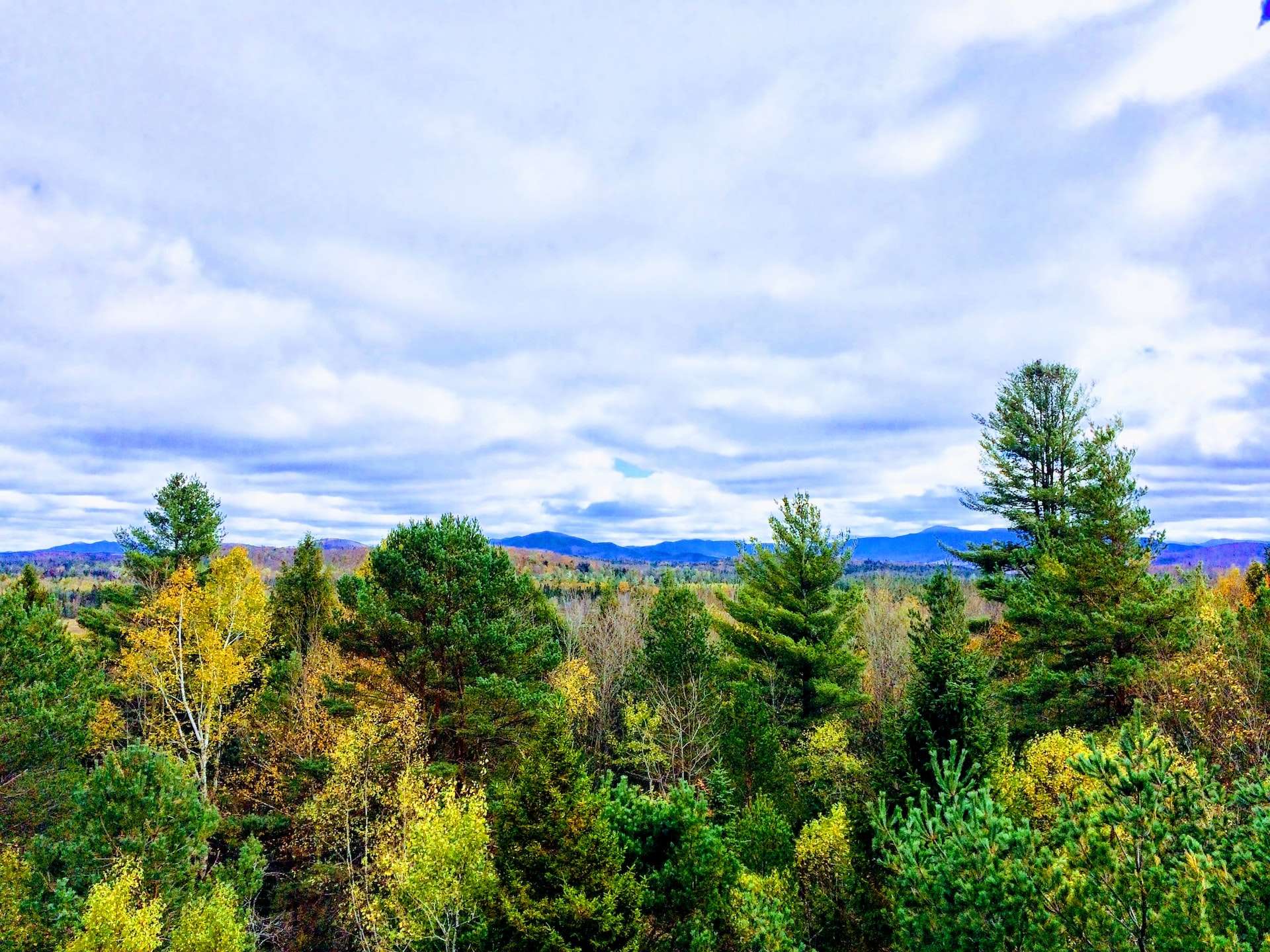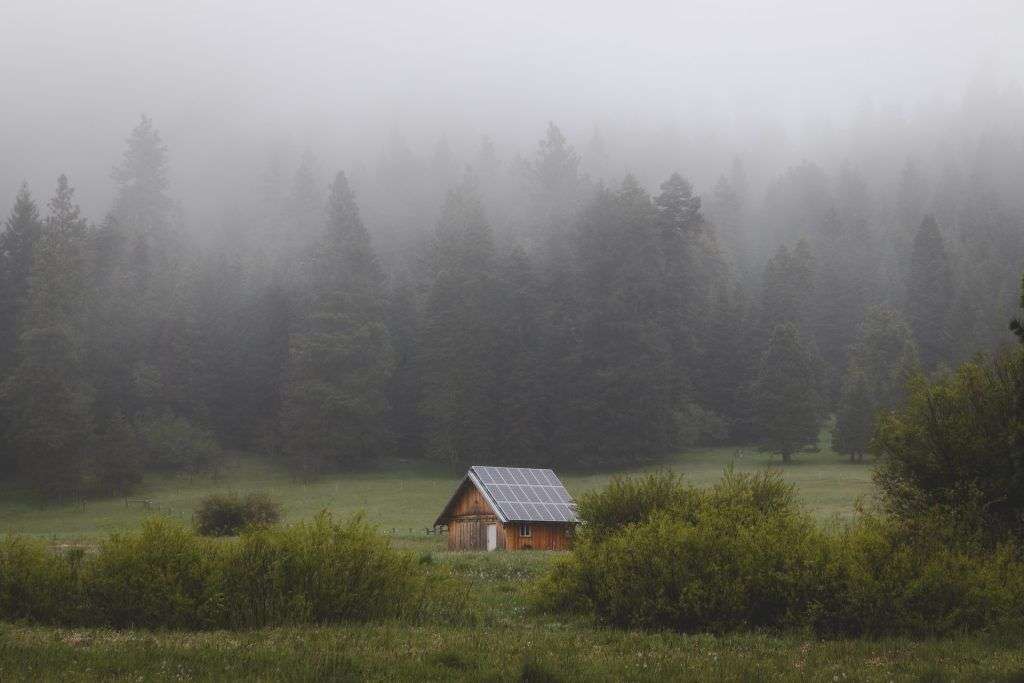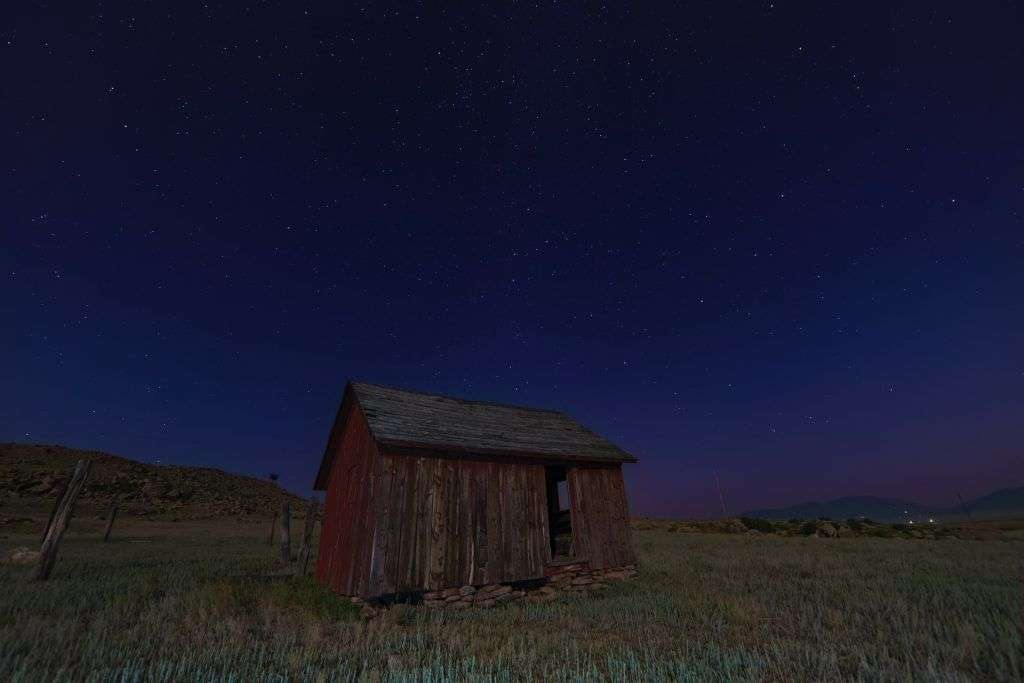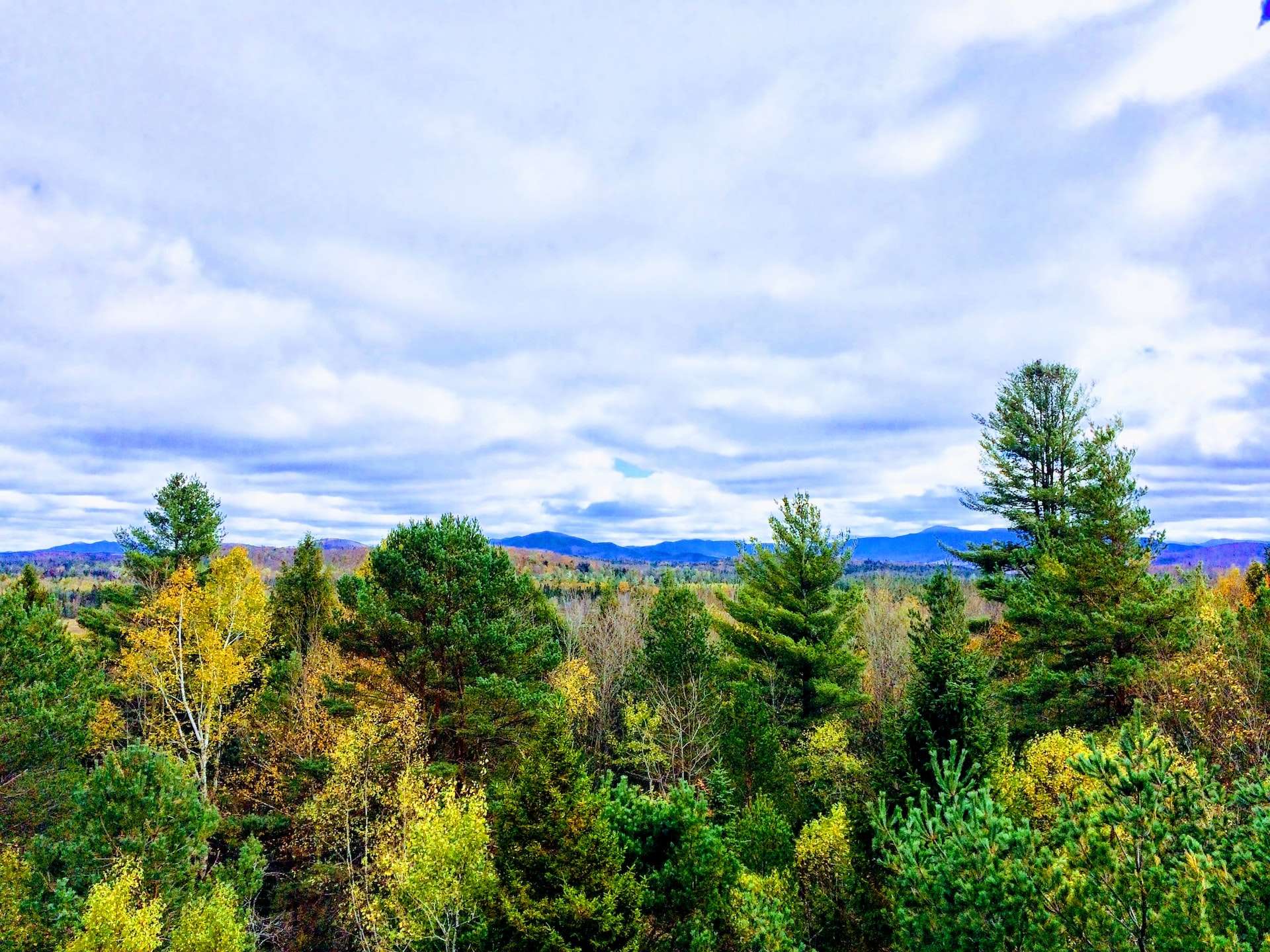If you’re looking for a place to embrace off-grid living, Montana may just be the perfect destination for you. With its vast wilderness and abundant natural resources, this state offers plenty of opportunities for those seeking a self-sufficient lifestyle. When it comes to finding the best places to live off the grid in Montana, counties with low population density and mild climates are your go-to options. Beaverhead, Madison, Ravalli, Granite, Missoula, Yellowstone, and Treasure County are often recommended for their favorable conditions. However, keep in mind that living off the grid in Montana comes with its own challenges, especially during harsh winters. But with ample access to necessities and like-minded individuals who value sustainable practices, this state provides a welcoming environment for those looking to disconnect from the grid. So, grab your firewood and start exploring the wild beauty that Montana has to offer. Just make sure to familiarize yourself with the local regulations and permits for things like outhouses along the way.
The Best Places for Off-Grid Living in Montana
Are you considering living off-grid in the vast wilderness of Montana? With its abundant natural resources and vast landscapes, Montana offers plenty of opportunities for those seeking a self-sufficient lifestyle. However, not all counties are created equal when it comes to off-grid living. In this article, we will explore the best places for off-grid living in Montana, taking into consideration factors such as population density, climate, and access to necessities. So let’s dive in and discover the top counties that offer the ideal conditions for your off-grid journey.
Beaverhead County
Located in southwestern Montana, Beaverhead County is a prime location for off-grid living. With a low population density and a large size, this county provides ample space for you to establish your self-sufficient homestead. Additionally, Beaverhead County boasts a mild climate, making it easier to navigate the challenges of off-grid living, especially during the winter months. So if you’re looking for a county that offers a balance of solitude and favorable weather conditions, Beaverhead County should definitely be on your radar.
Madison County
Another county worth considering for off-grid living in Montana is Madison County. Situated in the southwestern part of the state, Madison County offers stunning natural landscapes and a low population density. This means more privacy and less interference with your off-grid lifestyle. Whether you’re interested in solar power, sustainable agriculture, or simply enjoying the tranquility of a secluded lifestyle, Madison County could be the perfect fit for you.
Ravalli County
Nestled in western Montana, Ravalli County is renowned for its scenic beauty and diverse wildlife. It also happens to be an excellent choice for those seeking an off-grid lifestyle. With its low population density and access to necessary resources, Ravalli County provides the peace and serenity needed for an off-grid adventure. Imagine waking up to the breathtaking views of mountains and forests, embracing the quiet and simplicity that comes with living off-grid.
Granite County
If you’re searching for a county with an abundance of natural resources and a small population, look no further than Granite County. Located in western Montana, Granite County offers vast stretches of untouched wilderness and opportunities for self-sufficiency. Whether you’re interested in hunting, fishing, or simply living amongst nature, Granite County provides a picturesque backdrop for your off-grid lifestyle.
Missoula County
Missoula County, located in western Montana, is not only a vibrant and bustling community but also a great spot for off-grid living. While it may have a slightly higher population density compared to other counties on our list, it still offers plenty of opportunities for those seeking a self-sufficient lifestyle. With its diverse landscapes, ranging from mountains to valleys, Missoula County provides a perfect balance between community and seclusion.
Yellowstone County
Don’t let the higher population density of Yellowstone County deter you from considering it for off-grid living. Situated in southern Montana, this county offers a range of landscapes and access to necessary resources. Whether you prefer the rugged beauty of the mountains or the peacefulness of the plains, you’ll find it in Yellowstone County. Plus, being closer to urban amenities and services can be advantageous for off-grid living, especially if you require occasional supplies or medical assistance.
Treasure County
Treasure County is another option to consider for off-grid living in Montana. With its low population density and affordable land prices, this county provides an opportunity to establish your self-sufficient homestead without breaking the bank. However, it’s important to note that the cost of living in Treasure County may be higher compared to other counties due to its remoteness. So while it offers the allure of solitude and affordability, it’s essential to carefully consider your budget and the potential challenges of living in such a remote location.
Factors to Consider for Off-Grid Living in Montana
Before diving into the specific counties that offer the ideal conditions for off-grid living in Montana, it’s important to consider a few key factors. These factors include access to necessities, local regulations, and the challenges posed by harsh winters. Taking these into account will help you make an informed decision and ensure that your off-grid experience is as smooth as possible.
Access to Necessities
When living off-grid, access to necessities such as water, food, and medical care is crucial. While Montana is known for its vast wilderness, not all areas have the same accessibility to these essential resources. Consider whether the county you’re interested in offers access to clean water sources, fertile land for sustainable agriculture, and medical facilities within a reasonable distance. Being able to meet your basic needs will contribute to a successful off-grid lifestyle.
Local Regulations
Before embarking on your off-grid journey, familiarize yourself with the local regulations and zoning requirements of the county you’re interested in. Some counties may have specific regulations regarding off-grid living, including restrictions on renewable energy systems, water usage, or waste disposal. It’s important to ensure that your chosen county allows for the self-sufficiency practices you plan to implement. Being compliant with local regulations will save you potential headaches and legal issues down the road.
Challenges Posed by Harsh Winters
Montana winters can be harsh, with below-freezing temperatures and heavy snowfall. Living off-grid during the winter months requires careful planning and preparation. Ensure that your chosen county has the necessary resources and infrastructure to handle the challenges of winter, such as access to firewood for heating, snow removal services, and alternative energy sources for periods of extended power outages. Being equipped to handle the unique demands of winter will make your off-grid experience more comfortable and enjoyable.
Now that we’ve explored the factors to consider for off-grid living in Montana, let’s delve deeper into why certain counties are recommended for this lifestyle.

Why Beaverhead County is Recommended
Beaverhead County stands out as one of the top choices for off-grid living in Montana due to several key factors: low population density, large size, and a mild climate. Let’s explore each of these factors further.
Low Population Density
One of the primary advantages of living off-grid is the ability to escape the hustle and bustle of city life. Beaverhead County offers exactly that with its low population density. This means more privacy, less noise, and an overall greater sense of tranquility. You’ll have plenty of space to establish your self-sufficient homestead and immerse yourself in the beauty of the Montana wilderness.
Large Size
Beaverhead County is one of the largest counties in Montana, spanning over 5,572 square miles. This vast size provides ample opportunities for exploring and settling in remote areas, away from the crowds. Whether you’re interested in hiking, camping, or simply enjoying the solitude of nature, Beaverhead County offers plenty of room to roam and connect with the great outdoors.
Mild Climate
Another advantage of Beaverhead County is its relatively mild climate compared to other parts of Montana. While winters can still be cold and snowy, they are generally more manageable, making off-grid living a bit easier. A milder climate means less reliance on heavy heating systems and an extended growing season for sustainable agriculture. With the right preparations, you can navigate the challenges of winter more comfortably while still enjoying the benefits of off-grid living.
While Beaverhead County offers a combination of low population density, ample space, and a mild climate, there are other counties in Montana that also deserve consideration.
Other Recommended Counties
In addition to Beaverhead County, several other counties in Montana provide favorable conditions for off-grid living. Let’s take a closer look at these counties and what makes them worth considering.
Madison County
Madison County, located in southwestern Montana, boasts stunning natural landscapes and a low population density. It offers a perfect balance between solitude and community, with opportunities for outdoor activities such as hiking, fishing, and wildlife watching. If you value privacy and being surrounded by the beauty of nature, Madison County is an excellent choice for your off-grid lifestyle.
Ravalli County
If you’re looking for breathtaking scenery, Ravalli County has it in abundance. Located in western Montana, this county is known for its diverse wildlife and picturesque landscapes. It offers both solitude and access to necessary resources, making it an attractive option for off-grid living. Ravalli County provides the opportunity to immerse yourself in the serenity of nature while still being relatively close to urban amenities.
Granite County
For those seeking an off-grid lifestyle surrounded by untouched wilderness, Granite County is an ideal choice. Situated in western Montana, this county offers vast stretches of forests and mountains, providing plenty of opportunities for outdoor recreation. With its low population density and access to essential resources, Granite County allows you to embrace self-sufficiency while enjoying the peace and beauty of the natural world.
Missoula County
While Missoula County may have a slightly higher population density compared to other counties on our list, it still offers plenty of advantages for off-grid living. Located in western Montana, Missoula County provides a vibrant community, access to necessary resources, and a range of landscapes to explore. If you desire a balance between social interaction and seclusion, Missoula County might be the perfect fit for your off-grid lifestyle.
Yellowstone County
Despite its higher population density, Yellowstone County is an option worth considering for off-grid living in Montana. Situated in southern Montana, this county offers diverse landscapes and a range of necessary resources. Being closer to urban amenities can be advantageous, especially if you require occasional supplies or medical services. Yellowstone County provides the opportunity to live off-grid without sacrificing access to essential services.

Pros and Cons of Living in Treasure County
While Treasure County may not be as well-known as some of the other counties on our list, it still offers unique advantages for off-grid living. However, it’s essential to carefully weigh the pros and cons before considering this county as your off-grid destination.
Low Population Density
Similar to the other recommended counties, Treasure County boasts a low population density. This means more privacy, less interference, and a greater sense of seclusion. If you’re seeking solitude and a break from the noise and chaos of city life, Treasure County can provide the perfect backdrop for your off-grid lifestyle.
Cheap Land
Another significant advantage of Treasure County is the affordability of land. Compared to some of the other counties in Montana, land prices in Treasure County may be more budget-friendly, allowing you to establish your self-sufficient homestead without depleting your savings. This accessibility to affordable land provides an opportunity for individuals or families who have a limited budget but still dream of off-grid living.
Higher Cost of Living
While Treasure County offers the allure of affordable land, it’s important to consider the overall cost of living in this county. Due to its remoteness, the cost of goods and services may be higher compared to more populated areas. From daily supplies to occasional trips to the nearest town, it’s crucial to factor in the potential expenses associated with living in such a remote location. If you have the financial means and are willing to invest in this lifestyle, Treasure County can still be an excellent choice for your off-grid journey.
Off-Grid Communities and Like-Minded Individuals in Montana
One of the greatest benefits of living off-grid in Montana is the presence of off-grid communities and like-minded individuals. Montana attracts a diverse cohort of people seeking self-sufficiency, sustainability, and a closer connection to nature. By joining or connecting with these communities, you can learn from experienced individuals, share resources, and build a network of support for your off-grid lifestyle.
These communities often come together to share knowledge, trade goods, and support each other in various aspects of off-grid living. From practical skills like construction and gardening to strategies for embracing renewable energy and mitigating the challenges of harsh winters, the exchange of ideas among off-grid communities in Montana can be invaluable.
Whether you’re looking for a tight-knit community or simply want to connect with like-minded individuals on a more casual basis, Montana offers various opportunities to meet others who share your off-grid aspirations.

Popular Beautiful Places to Live in Montana
While the focus of this article has been on the best counties for off-grid living in Montana, it’s worth mentioning some of the popular beautiful places within the state. These locations may not have the same low population density or remote nature as the recommended counties, but they are still worth considering for their natural beauty and amenities.
Bozeman
Bozeman is a thriving city in southwest Montana known for its stunning mountain views, outdoor recreational opportunities, and vibrant community. While it may not offer the same level of seclusion and self-sufficiency as some of the more remote counties, it still attracts individuals who value the natural beauty of Montana and seek an outdoor-centric lifestyle.
Missoula
Situated in western Montana, Missoula offers a balance between the benefits of off-grid living and the amenities of a larger city. With its art scene, numerous parks, and vibrant community, Missoula appeals to those who desire a mix of social interaction and access to urban resources.
Whitefish
Whitefish, located in the northwest corner of Montana, is a popular destination for outdoor enthusiasts and nature lovers. From its proximity to Glacier National Park to its stunning lake, Whitefish offers a range of outdoor activities and beautiful landscapes. While it may be a more popular tourist destination, it still provides the opportunity to connect with nature and live amidst the tranquility of Montana.
The Flathead Valley
The Flathead Valley, encompassing the areas around Flathead Lake, offers breathtaking scenery and a range of recreational opportunities. With the lake as its centerpiece and the stunning mountains as its backdrop, the Flathead Valley provides a picturesque setting for those who appreciate natural beauty.
Other States for Off-Grid Living
While Montana is undoubtedly a prime location for off-grid living, it’s worth exploring other states that offer similar opportunities. Here are a few states that are considered best for living off the land:
Alaska
Alaska is often viewed as the ultimate off-grid living destination. With its vast wilderness, abundant resources, and opportunities for solitude, Alaska provides an unmatched sense of self-sufficiency. From hunting and fishing to harvesting your own firewood, living off the grid in Alaska can be both challenging and rewarding.
Idaho
Idaho, with its diverse landscapes and low population density, is another state that attracts individuals seeking self-sufficiency and seclusion. From the mountains to the forests, Idaho offers varied terrain and a range of natural resources, making it an ideal choice for off-grid living.
Wyoming
Wyoming is known for its wide-open spaces, stunning mountain ranges, and abundant wildlife. With a low population density and opportunities for outdoor activities, Wyoming provides ample room for off-grid living. Whether you’re interested in ranching, farming, or simply immersing yourself in the tranquility of nature, Wyoming offers a unique off-grid experience.
Colorado
Colorado, with its diverse ecosystems and scenic beauty, presents numerous opportunities for off-grid living. From the mountains to the plains, Colorado offers a range of climates and landscapes, providing options for various off-grid lifestyles. Whether you’re drawn to the solitude of the wilderness or prefer a more community-oriented approach, Colorado has something to offer off-grid enthusiasts.
Regulations and Permits for Outhouses in Montana
When it comes to off-grid living, one essential aspect to consider is waste management. Outhouses can be a viable solution for dealing with human waste, but it’s important to understand and comply with the regulations and permits that may be required in Montana.
While outhouses are legal in Montana, specific regulations and permits may apply depending on the county and local zoning requirements. It’s crucial to research and understand the guidelines set forth by your chosen county and obtain any necessary permits before constructing an outhouse on your off-grid property.
These regulations typically outline requirements such as setback distances from water sources and property boundaries, as well as guidelines for waste containment and removal. By adhering to these regulations, you can ensure that your off-grid lifestyle is both sustainable and environmentally responsible.
In conclusion, Montana offers a plethora of opportunities for off-grid living, thanks to its vast wilderness and abundant natural resources. The best places to live off the grid in Montana are counties with low population density, mild climates, and access to necessary resources. Whether you choose Beaverhead County for its low population density and mild climate, or Madison County for its stunning landscapes and seclusion, Montana provides an ideal backdrop for your off-grid adventure.
Remember to consider factors such as access to necessities, local regulations, and the challenges posed by harsh winters before settling on a specific county. By taking these factors into account, you can ensure that your off-grid experience in Montana is both fulfilling and sustainable. And if Montana doesn’t meet your exact needs, don’t forget to explore other states such as Alaska, Idaho, Wyoming, and Colorado that offer similar opportunities for living off the land.
Living off the grid is a lifestyle choice that requires careful consideration, planning, and preparation. But with the right mindset, determination, and a little help from like-minded communities, it can also be one of the most rewarding experiences of your life. So go ahead and embrace the freedom, self-sufficiency, and natural beauty that Montana has to offer – your off-grid journey awaits!




